
views
Filing a Complaint With the U.S. Department of Labor

Talk to your employer. Before you file a formal complaint, talk to your boss or someone in the human resources department and see if you can resolve the issue internally. Don’t get emotional or make any personal attacks. Even if you think your boss is a jerk, you don’t need to tell him that. Remain polite and professional at all times. Document everything that happens. Keep records of each exchange, in writing if possible. If you have any oral conversations, you don’t have to record them, but try to take notes soon after. Your best option if a conversation takes place is to send an email or written letter to the person with whom you spoke within 24 hours of the conversation. State when the conversation took place and that what you’re writing is your understanding of what was said, then summarize the conversation. For example, you might write: “Dear Betty, Thank you for speaking with me yesterday regarding the missing hours on my paycheck. It is my understanding that you have reviewed the payroll records and that I was paid for all the hours I’d worked. However, I worked on Wednesday and was not paid for those hours. You agreed to check the time clocks and see if they were functioning properly. Thank you for your assistance.” Don’t gossip about the issue with your coworkers. Although you may be upset about what happened, be professional and avoid accusations that you are spreading rumors or talking about people behind their backs. If you are a member of a union, you may be required to talk to a union representative before you file a formal complaint or do anything else. If that’s the case, follow your union policies.
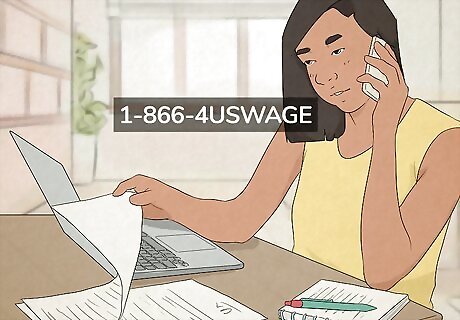
Make sure your employer is required to comply with federal law. The Wages and Hours Division of the DOL enforces the Fair Labor Standards Act, the Family Medical Leave Act, and other federal laws dealing with employee hours and wages. The FLSA and FMLA apply generally to all companies engaged in interstate commerce. If you’re not sure if your employer is covered, you can call the WHD at 1-866-4USWAGE to ask. The division’s toll-free help line is available Monday through Friday from 8:00 a.m. to 8:00 p.m. eastern time. You also can visit a local office in person or send an email. The WHD also will let you know if you should file with your state agency before filing a federal complaint. In many cases, you must exhaust any state remedies before you move to the federal level.
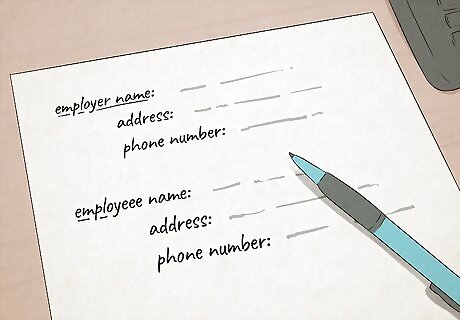
Gather the required information. To file a formal complaint with the WHD, you’ll need your name, address, and phone number, as well as the name, address, and phone number of your employer. You’ll also need to tell them the name of the owner or manager they should speak to regarding your complaint, the type of work you did, and how and when you were paid. You also should include any additional information or documentation, such as pay stubs or a copy of the employee handbook, that you think the WHD might find helpful when they evaluate your claim.

File your complaint. You can begin the complaint process by calling the WHD at 1-866-4USWAGE or visiting the division’s website. You’ll be directed to your nearest local office, where your complaint will be evaluated. Complaints to the WHD are confidential. In the event the WHD decides to investigate your employer, your identity will not be revealed to anyone. Because complaints must be filed within two years of the incident, make sure you file as soon as possible after you discover the problem with your wages or hours.

Follow through with your complaint. If the WHD discovers unpaid wages or unpaid overtime compensation, it may supervise the payment of that money. It also may seek penalties from your employer for violation of the law. In addition, employers who intentionally violated the law may be brought up on criminal charges and could face criminal fines and imprisonment. The DOL may file a lawsuit against your employer on your behalf. If it doesn’t, you have the right to file a private civil suit.
Filing a Complaint With the U.S. Equal Employment Opportunity Commission
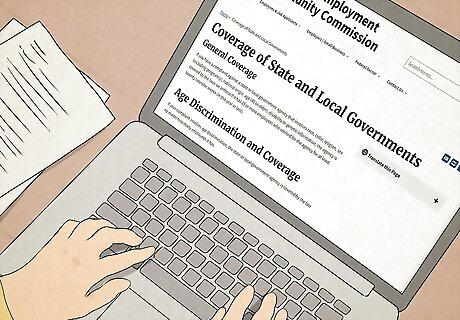
Make sure your employer is required to comply with federal law. The laws enforced by the EEOC apply to all government employers and to private businesses with at least 20 employees. Federal law applies whether you are an active employee or a job applicant at a covered employer.
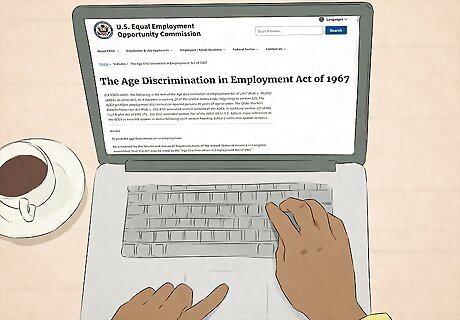
Check that the action of your employer violates a law enforced by the EEOC. Federal laws enforced by the EEOC include Title VII of the Civil Rights Act of 1964, the Equal Pay Act, the Age Discrimination in Employment Act, and Title I of the Americans with Disabilities Act. These laws protect against employment discrimination on the basis of race, color, religion, sex, national origin, age, disability, or genetic information. For example, if an employer posted a help-wanted ad seeking only white female applicants for a secretarial position, that ad would violate the law and an affected applicant could file a complaint with the EEOC. Age discrimination laws only apply if you are over the age of 40. The law is designed to protect older workers from being treated unfairly because of their age, but it does not prohibit employers from discriminating against younger employees who may not have adequate experience. Prohibited practices also include making a work environment so intolerable through discriminatory behavior that a reasonable person would not be able to stay, a situation known as constructive discharge.

Talk to your employer. Before you file a formal complaint, talk to someone at your workplace with authority. Your workplace should have a policy for dealing with discrimination or harassment publicly displayed. This can be difficult if your direct supervisor is the one responsible for discriminating against you or harassing you, but don’t be afraid to go over his head. If you’re represented by a union, talk to your union representative before you do anything else. They are there to help you in these kinds of situations. Don’t gossip about the situation among your coworkers, no matter how upset you are, and don’t ask them about the person who’s bothering you. For example, suppose your direct supervisor, Larry, frequently makes comments about your body that make you uncomfortable. Speak to someone who has the authority to discipline Larry or make those comments stop, rather than asking your coworkers if Larry has ever said anything similar to them. However, if a coworker witnesses the harassment or discrimination, ask them to write down what they saw or heard so you have their statement on the record. Keep a record of everything that happens, including every encounter or episode of harassment, particularly if you’re trying to show a pattern of harassment or a hostile work environment.

File a charge of discrimination at your nearest EEOC field office. In most cases, federal law requires that you must file a charge with the EEOC before you can file an employment discrimination lawsuit against your employer. If your state has a Fair Employment Practices Agency, you can file there and your charge will also be filed with the EEOC if federal law applies. You must file your charge within 180 days of the last incident of discrimination. That deadline is extended to 300 days if your employer is covered by a state or local law that prohibits discrimination on the same basis as the federal law enforced by the EEOC. If more than one incident has occurred, the deadline applies to each event separately. However, if you’re charging an ongoing pattern of harassment, the EEOC considers all of the events as a whole. The deadline applies to the last and most recent event, although the EEOC considers all events related to the harassment, even those for which the deadline has passed. While the EEOC does not allow you to file your charge online, it does have an Online Assessment Tool you can use to determine whether the EEOC is the appropriate place for you to file a charge. When you file your charge, the EEOC will give you a copy of your charge with a charge number. Within 10 days, the agency will send a notice and copy of the charge to your employer..

Wait for a response from the EEOC. The EEOC will evaluate your charge and determine the appropriate response. In some cases, the agency will ask your employer to provide a written response to your charge, while in others it will ask you both to participate in a mediation program. If the EEOC determines that your charge was filed too late, that it does not have jurisdiction to resolve your claim, or that it would be unlikely to find discrimination based on the facts you’ve provided in your charge, it will promptly dismiss your charge. If asked to participate in mediation, you and your employer will sit down with a neutral third party who will assist you in coming to a compromise. The goal is for both parties to discuss the issue and come to a voluntary settlement.

Follow through with your charge. If the EEOC finds no violation of the law, or if you and your employer are unable to reach a settlement at mediation, the EEOC will provide you with a Notice-of-Right-to-Sue. This document gives you the ability to file a lawsuit in federal court. If the agency does find a violation of the law and cannot reach a settlement with your employer regarding that violation, your charge will be forwarded to the agency’s legal staff to decide whether the agency wants to file a lawsuit. If they decline, you will receive a Notice-of-Right-to-Sue.
Filing a Complaint With the Occupational Safety & Health Administration
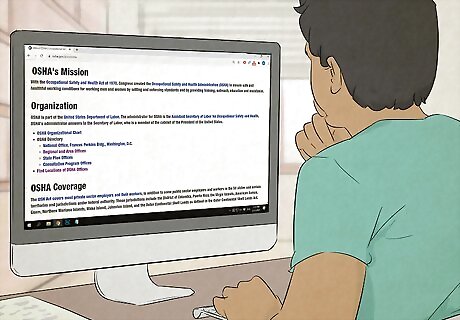
Understand what OSHA does. OSHA is a federal agency charged with ensuring workers have safe and healthful working conditions and that they are not subject to any extraneous risks of harm while on the job.

Talk to your employer. Before you go to OSHA, alert a manager or supervisor to the hazard that is impacting health or safety in your workplace. They can’t fix the problem if they’re not aware of it.
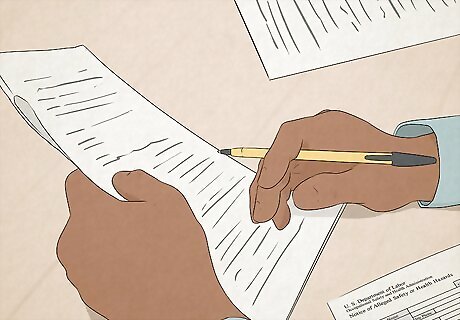
Gather the information you’ll need. Almost all employers are covered either by OSHA or by an OSHA-approved state program. OSHA requires certain information to accompany your complaint and request. Reviewing the complaint form can help you figure out what information you’ll need to compile to make your complaint. Apart from identifying information about yourself and your employer, OSHA would like to know how many employees work there and are exposed to the hazard, when they are exposed, and for how long, what kind of work they’re doing, and how long the hazard has existed. Additionally, if you have any knowledge about whether anyone has been injured as a result of the hazard and whether anything has been done to correct it in the past, this would also be helpful for OSHA. However, you don’t have to know all of this information to file a complaint. You should include any and all information that you think might be helpful, as long as it is true and accurate to the best of your knowledge. Don’t worry about not knowing the rules or regulations, or knowing which health or safety standard has been violated.

File a health and safety complaint or request for inspection. OSHA allows you to file a complaint online, over the telephone, or using mail or fax. You can use whichever method is easiest for you. However, if there is an emergency or the situation is life-threatening, you should call 1-800-321-OSHA for an immediate response. Submit your complaint form to your local or regional OSHA office. Written complaints that you sign and submit to your nearest OSHA office are most likely to result in onsite inspection and further action.
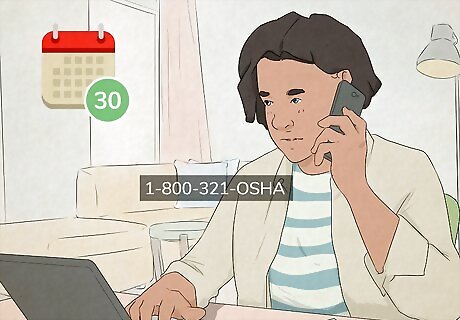
File for discrimination within 30 days of the incident. If you were fired, demoted, transferred, or otherwise discriminated against because you requested an inspection or demanded your employer comply with your rights under the OSH Act, you can file a discrimination complaint with OSHA as well.
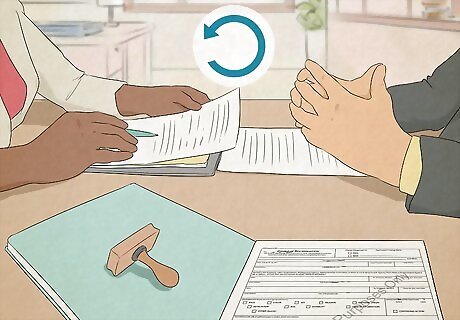
Follow through with your complaint. When the OSHA inspector arrives at your workplace, you have the right to accompany her on her inspection and meet with her privately. You also have the right to sit in on any meetings that are held between the OSHA inspector and your manager or other employer representative. If you aren’t represented by a union, the OSHA inspector also is required to talk to other employees about the subject matter of your complaint. If the inspector finds a violation of OSHA standards, she can order the problem fixed by a certain date and charge fines to the employer. You and other employees have the right to challenge the deadline for resolution of the problem. If your employer appeals the inspector’s decision, you have the right to be involved in the appeals process. However, you must notify OSHA in advance that you want to be involved.
Filing a Complaint With Your State Agency

Talk to your employer. Before you take any steps to involve an outside party, make sure you’ve done all that you can do by speaking directly to your supervisors, management, or human resources department. If you are represented by a union, you’ll need to speak with your union representative and make sure all the union policies are followed before you submit your complaint. Document all encounters with your employer regarding your dispute, and if possible keep all exchanges about the issue in writing.
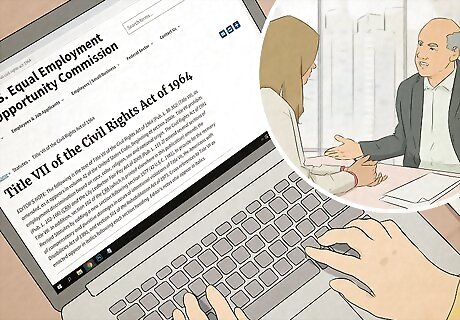
Find out if your employer is covered by the state law. Generally, state labor and employment laws cover all employers doing business within the state, but some state laws only cover companies with at least a certain number of employees. Your state laws cannot provide any less protection than federal law, but they may provide more. If they do, it would be more advantageous for you to file a complaint for violation of the state law than for violation of the federal law. For example, by 2015, 29 states had a state minimum wage that was higher than the federal minimum wage law. If you lived in one of those states and had a wage complaint, you would be better served to file a state rather than federal complaint. In addition, some states prohibit discrimination based on factors not covered by federal law. In these situations, employees would have a claim under state law but not under federal law. Many states adopt the federal law as state law as well, which means any violation of the federal law by an employer also is a violation of state law. You can start your state research at your state labor department’s website. The website will have information about what activities violate state law, how to file a complaint, and how to contact state government employees who can assist you.
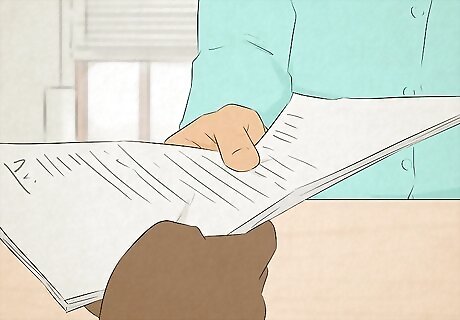
File your complaint. To file a complaint with a state agency for violation of state labor or employment law, you’ll have to follow the procedure established by that agency. For example, to file a state complaint in Texas, you must print a paper form, fill it out, and either mail it or take it in person to the office of the Texas Workforce Commission in Austin, Texas. In contrast, Pennsylvania has three regional offices where complaint forms must either be mailed or presented in person. In many cases, if you haven’t yet contacted a federal agency regarding your complaint, the state agency will contact them on your behalf if their input is necessary.
Filing a Lawsuit Against Your Employer

Exhaust federal and state agency options. In many cases, you are required by law to file a complaint with the agency responsible for enforcing a law before you can file a lawsuit. You also want to make sure you’ve exhausted all internal options. Before you file a lawsuit, confirm that you’ve talked to your boss or to the human resources department and you’ve followed all company policies regarding the complaint or dispute. If you’re represented by a union, talk to your union representative before you file a lawsuit.

Decide where to file your lawsuit. If your claim arises under federal law, you must file suit in federal court. Otherwise you’ll probably file suit in state court. You may be able to file a simple breach of contract suit in small claims court, provided the amount of money you’re claiming your employer owes you falls under the threshold for small claims – typically under $10,000, depending on the state. Keep in mind that if you are an at-will employee, your ability to file a lawsuit may be limited, especially if you intend to file for breach of contract. At-will employment means your employer can fire you for any reason or no reason at all. However, if your employer has any written policies you are entitled to rely on them. For example, if the employee handbook given out at your company states that employees cannot be terminated unless they’ve been written up three times, you possibly could sue for breach of contract if you were fired and had only been written up once. If you have to file suit in federal court to enforce your rights, you probably want to consider hiring an attorney experienced in employment law. Federal court procedures are complicated and the standards of evidence can be difficult.
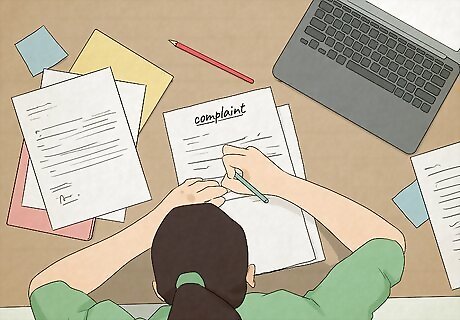
Draft your petition or complaint. You need to tell the court what happened, how it was against the law, and the money or other remedies you believe you deserve as a result. An employment law attorney is highly recommended at this stage unless you’re filing in small claims court. The clerk’s office won’t have forms available for employment law cases as they do for many other matters, and an attorney can make sure you’ve included all the facts that you need to prove your case. If you cannot afford an attorney, check with your local legal aid office or at the nearest law school, which may have clinics with free or reduced-rate services.
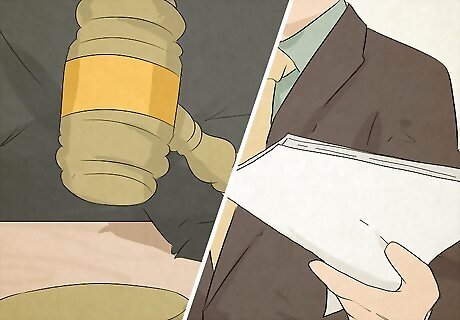
File your petition or complaint and serve your employer. Once you’ve finished drafting your complaint, you must file it with the clerk of court at the court where you’ve decided you need to file your suit. When you file your suit, the clerk will stamp it and possibly schedule your initial hearing. You pay filing fees ranging from $50 to several hundred dollars, depending on the state and whether you’re filing in small claims, state, or federal civil court. After your suit is filed, your employer must be served so he knows what you’re asking a judge or jury to decide and when he has to appear in court to present his side. You cannot serve your employer yourself, but the clerk’s office will have a list of law enforcement and private process serving companies you can use. They will charge you a fee for their service.

















Comments
0 comment